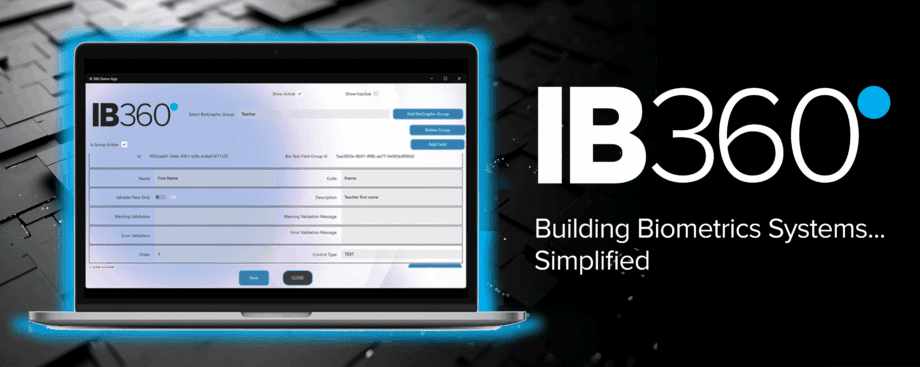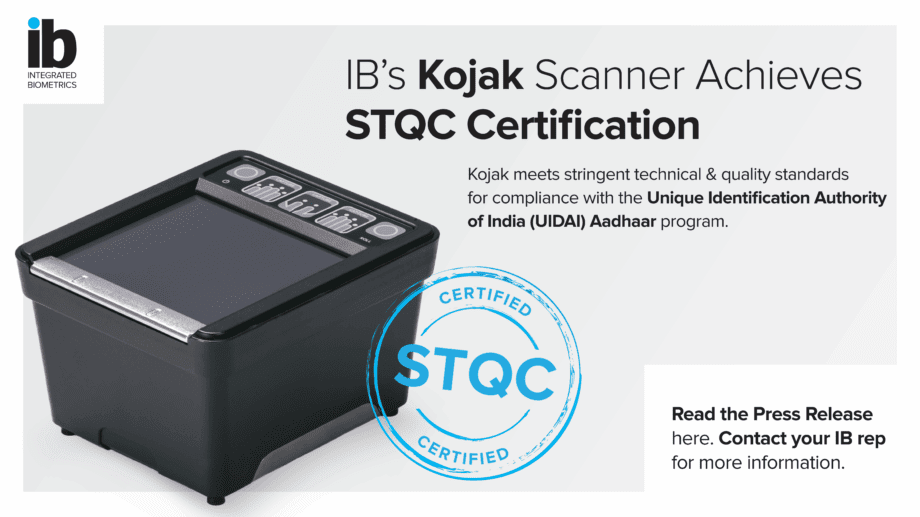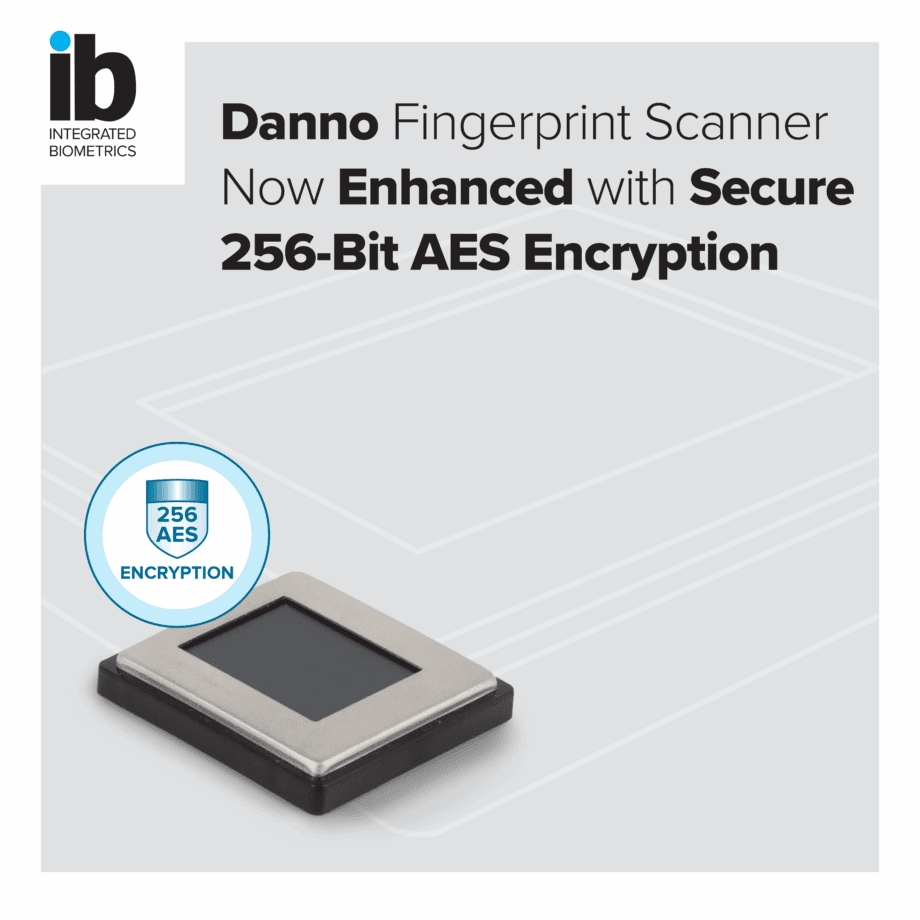Download the Article here.
Resolving the challenges of biometric identification for infants has been a decades-long battle. The physiological attributes of infants—from changing physical traits to small-scale fingerprints—have blocked accurate, traceable capture. What’s more, the absence of scalable, high-accuracy systems has prevented the implementation of infant identification programs – leaving notable gaps in social services, healthcare and security for the world’s youngest and most vulnerable.
Fortunately, developments in biometric technology for newborns and infants are addressing these barriers. Advanced biometric technology ensures clear fingerprints, handprints, and footprints, allowing for accurate data capture within hours of birth. Such breakthroughs unlock the potential to revolutionize healthcare, government services, and security systems—with a print today being the promise of tomorrow.
What is Infant Identification?
Infant identification refers to a biometric identification system designed to capture and read a child’s unique biological markers from birth. Unlike traditional identification methods—such as names or government-issued ID numbers—which can be lost, misassigned, or manipulated, biometric identifiers can be uniquely traced back to one person only.
The core innovation of infant identification is its ability to accurately recognize a child’s biometric characteristics over time, even as they significantly grow and change. Among the various available scanning methods—such as fingerprints, footprints and iris recognition—fingerprint scanning has emerged as the most promising due to its convenience, accuracy and scalability. This makes it an ideal choice for widespread implementation in systems aimed at safeguarding and identifying the youngest members of society.
Applications of Infant Identification Technology
Infant identification systems offer a robust foundation for establishing secure, lifetime identifiers for infants and children, ensuring consistent access to essential protections, services, and opportunities as they get older. Some promising applications for this pivotal technology include:
1. Government and Social Services
Tracing a person to their time of birth, place of birth and parents is key to identity and empowerment beginning at Day 1 of life. With an estimated 4.4 million stateless individuals worldwide—many of them children—infant identification systems provide a vital solution by connecting legal identity to birth records, ensuring accurate parental linkage and birth registration. In places like Mato Grosso, Brazil, biometric registration has already made a significant impact, with over 6,000 children registered and securely linked to their mothers through biometrics.
Recognizing a child’s identity from birth can facilitate secure access to education and healthcare services while protecting against identity fraud. Registration can also ensure fair and equitable distribution of food aid and social benefits, promoting the efficient use of tax dollars. In rural Zambia, a case study of Impact Network schools demonstrated how biometric identification systems enhance childcare facility security by streamlining check-ins, preventing unauthorized pickups, and tracking educational milestones effectively.
In migration and post-disaster contexts, these systems—designed for use in nearly every environment – play a critical role in identifying children and reuniting them with their families. They provide a reliable and efficient method for reconnecting loved ones during crises, ensuring safety and support when needed most.
2. Healthcare Applications
Infant identification has significant implications for healthcare, starting from a baby’s birth and moving into their growth and development. From the moment of birth, biometric systems can play a critical role in preventing incidents like baby swapping in hospitals by securely identifying newborns and verifying identity prior to discharge. Additionally, newborn screening programs can integrate an infant’s biometric ID to tie screening results directly to their profile, facilitating timely follow-up care.
As children grow, infant identification can streamline healthcare processes by linking a child’s identity to electronic health records. This ensures seamless tracking of vaccination schedules, prevents errors in treatment, and guards against fraud or misuse of healthcare benefits. Such integration guarantees proper resource allocation, ensuring children receive the care they need. In emergencies, infant identification can give healthcare providers vital access to medical history to enable swift and informed decision-making.
3. Security and Anti-Trafficking
India’s National Crime Records Bureau (NCRB) reports that over 47,000 children are missing in the country, with roughly 71% of them being girls. Biometric databases can help bridge such alarming gaps by equipping authorities with information to trace and rescue missing or trafficked children. Infant identification systems can add a critical layer of security, helping combat abduction and trafficking through secure and traceable identification.
In addition to preventing trafficking, these systems can streamline the adoption and foster care processes by securely matching children with their foster or adoptive families. This eliminates the risk of identity mismatches, ensuring safe and reliable placements. By enhancing protective measures, infant identification technology provides a robust solution to safeguard vulnerable children and support secure family transitions.
Infant Identification: Building a Bridge to a Secure Future
Groundbreaking infant identification systems offer clear, verifiable identifiers that ensure accurate data tracking and integration across and beyond healthcare, education, and social services. While the potential is vast, fully unlocking it requires not only the right technology, but also experienced partners who can address key challenges like privacy concerns and regulatory compliance.
Success stories from regions like Brazil highlight how skillfully-implemented infant identification systems can transform child protection and improve access to vital services. With the right people driving adoption and scalability, these technologies can create lasting change for the world’s youngest and most vulnerable populations.
Learn More About the Possibilities of Infant Identification with Integrated Biometrics
Integrated Biometrics (IB) is at the forefront infant identification systems development to protect and establish a child’s legal identity from birth. Want to learn more about how IB’s solutions can help your organization make a difference? Connect today to discuss how we can assist you with fulfilling the promise of a life of safety, dignity and equity.
Additional Sources for this Article
https://infantid.com/caso-de-sucesso-mato-grosso/
https://www.id4africa.com/2019/almanac/MICHIGAN-STATEUNIVERSITY-MSU-Professor-Anil-K-Jain.pdf
https://pmc.ncbi.nlm.nih.gov/articles/PMC9800356/
About Integrated Biometrics
Integrated Biometrics (IB) is a global leader in advanced biometric technology. Renowned for revolutionizing fingerprint scanning through its proprietary, FBI-certified Light Emitting Sensor (LES) technology, the company delivers cutting-edge fingerprint scanners, seamless biometric system integration software, contactless fingerprint capture, and comprehensive identity management beginning with infant identification solutions.
Trusted by organizations worldwide, Integrated Biometrics serves critical sectors such as law enforcement, military, election validation, financial services, and national identity programs. Its robust, high-performance products enable fast and accurate enrollment, identification, and verification, even in remote and extreme environments. IB continues to redefine the possibilities of biometrics—Impacting Lives Through Identity.




